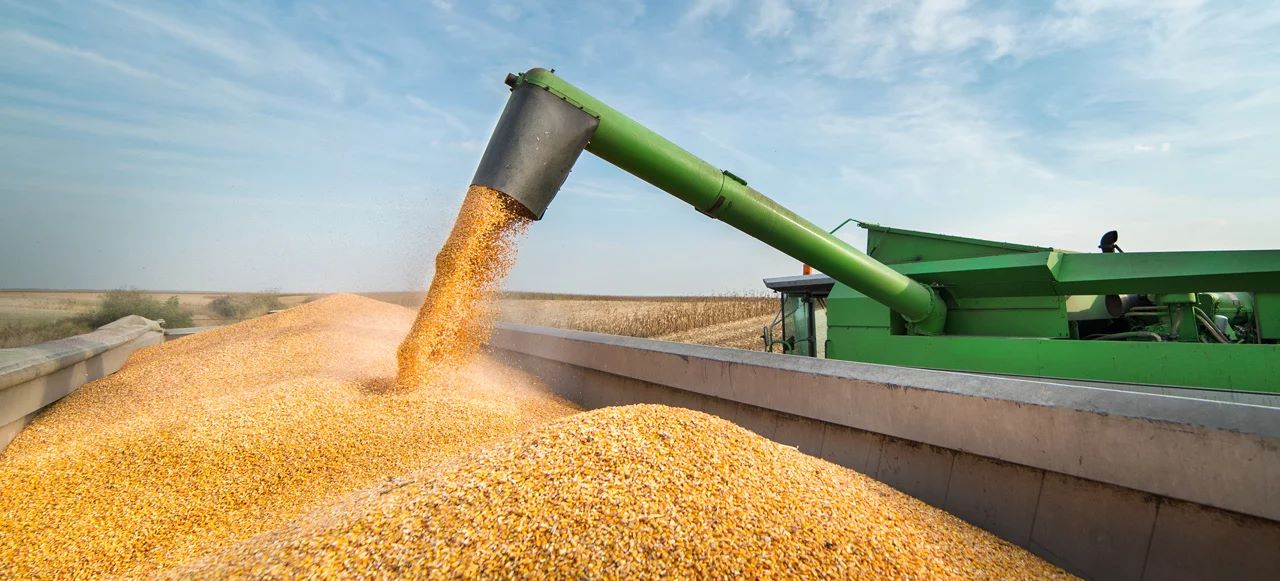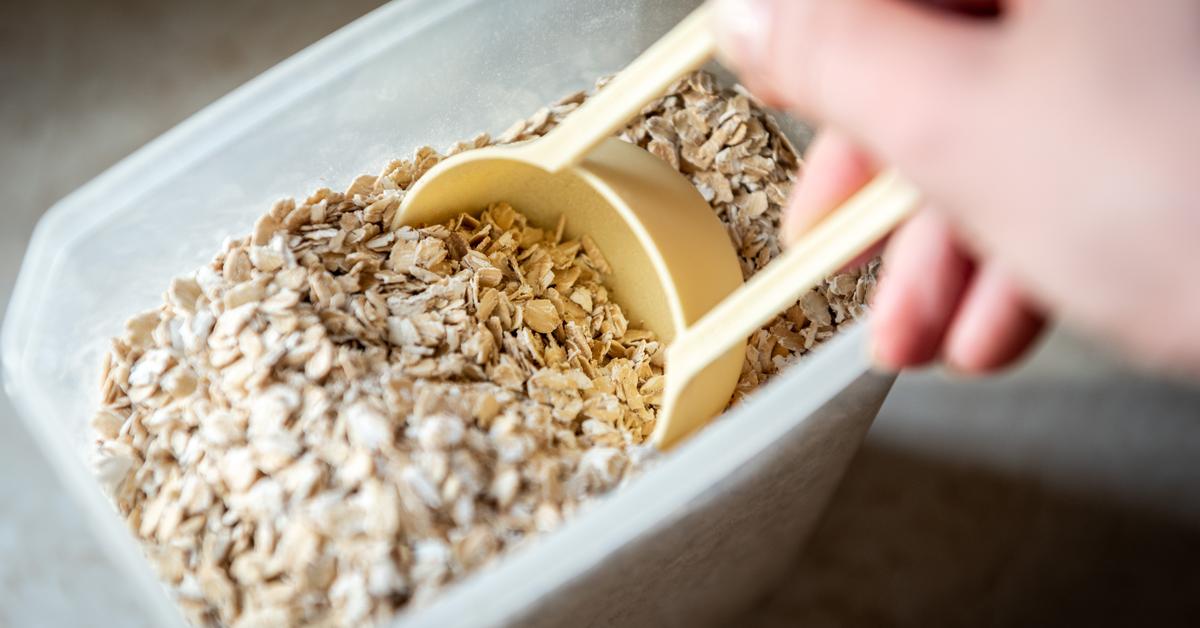

Articles
How To Store Grains Long Term At Home
Modified: December 7, 2023
Learn how to store grains long term at home with our informative articles. Find tips and techniques to ensure your grains stay fresh and ready for use.
(Many of the links in this article redirect to a specific reviewed product. Your purchase of these products through affiliate links helps to generate commission for Storables.com, at no extra cost. Learn more)
Introduction
Welcome to our guide on how to store grains long term at home. If you’re someone who loves to stock up on essential food items or is looking to create a reliable emergency food supply, knowing how to store grains properly is essential.
Grains are an excellent staple for any pantry, providing essential carbohydrates, nutrients, and versatility in countless recipes. However, improper storage can lead to spoilage, infestation, and a loss of nutritional value. But fear not! With the right knowledge and techniques, you can ensure that your grains remain fresh, flavorful, and safe to consume for an extended period.
In this comprehensive guide, we will explore the importance of long-term grain storage, factors to consider before storing grains, choosing the right grains for long-term storage, preparing grains for storage, selecting suitable storage containers, essential tips for proper grain storage, monitoring, rotating stored grains, and common mistakes to avoid.
By the end of this article, you will have a thorough understanding of how to store your grains effectively, helping you save money, reduce food waste, and have peace of mind knowing that you have a reliable food supply in case of an emergency. So let’s dive in and unlock the secrets of successful long-term grain storage!
Key Takeaways:
- Properly stored grains provide emergency preparedness, cost savings, and dietary options. Choose suitable containers, monitor regularly, and avoid common mistakes to ensure a reliable long-term food supply.
- Select high-quality grains, prepare them meticulously, and implement a rotation system to maintain freshness. By following these steps, you can confidently store grains long term and enjoy peace of mind.
Read more: How To Store Spaghetti Long Term
Importance of Storing Grains Long Term
Storing grains long term is crucial for several reasons. Let’s explore the importance of proper grain storage:
- Emergency Preparedness: Having a well-stocked pantry that includes long-lasting grains is essential for emergency situations such as natural disasters, power outages, or even personal financial difficulties. When access to fresh food becomes limited, stored grains can sustain you and your family for an extended period.
- Food Security: In uncertain times, ensuring food security is a top priority. By storing grains long term, you can create a reliable food reserve that provides peace of mind, knowing that you can feed yourself and your loved ones regardless of external circumstances.
- Cost Savings: Buying grains in bulk and storing them long term can significantly reduce your grocery expenses. Instead of paying higher prices for smaller quantities, you can take advantage of sales or bulk discounts, ultimately saving money in the long run.
- Extended Shelf Life: Properly stored grains can maintain their quality and nutritional value for years. This allows you to take advantage of seasonal or discounted prices without worrying about spoilage. Additionally, having a well-rotated stock of grains ensures that none go to waste.
- Dietary Options: Storing grains long term opens up a variety of dietary options. You can experiment with different recipes, discover new flavors, and expand your culinary horizons. Whether you follow a specific diet or have dietary restrictions, having a diverse range of grains at your disposal ensures you always have suitable options available.
- Self-Sufficiency: By storing grains long term, you become more self-sufficient in your food supply. You reduce reliance on frequent grocery store visits and external factors that may impact food availability. This self-sufficiency gives you more control over your diet and allows you to make informed choices about what you consume.
With the importance of long-term grain storage established, it’s time to delve into the factors you need to consider before storing your grains. Let’s explore these factors in detail.
Factors to Consider Before Storing Grains
Prior to storing grains long term, it’s important to consider several factors to ensure the best possible storage conditions. Let’s take a look at these factors:
- Quality of the Grains: Start with high-quality grains that are free from any signs of damage, moisture, or pests. The better the quality of the grains, the longer they will keep during storage.
- Moisture Content: Moisture is the enemy when it comes to storing grains. Moisture can lead to mold, spoilage, and the growth of bacteria and pests. Before storing grains, ensure that they are properly dried to the recommended moisture content level.
- Storage Location: Choose a storage location that is cool, dry, and dark. Exposure to light and heat can accelerate the deterioration of grains. Additionally, consider the airflow and ventilation in the storage area to prevent the buildup of moisture.
- Storage Containers: It’s essential to use proper storage containers that are airtight to prevent moisture and pests from entering. Consider using food-grade plastic buckets with tight-fitting lids, glass containers with rubber seals, or metal containers specifically designed for long-term grain storage.
- Proper Labeling: To ensure easy access and rotation of stored grains, label each container with the type of grain, the date of storage, and any other relevant information. This helps you keep track of the freshness of your grains and ensures that older stock is used first.
- Pest Control: Protecting your grains from pests is crucial. Before storing grains, inspect them carefully for any signs of infestation. Consider using oxygen absorbers or desiccants to create an environment that is unfavorable for pests. Regularly check your storage area for any signs of pests and take immediate action if necessary.
- Storage Quantity: It’s important to store an appropriate quantity of grains based on your needs and available storage space. While it’s beneficial to stock up, avoid excessive hoarding that can lead to waste or inadequate rotation of your grain supply.
By considering these factors before storing your grains long term, you’ll set the foundation for successful grain storage. In the next section, we will explore the best types of grains for long-term storage and how to prepare them for storage.
Choosing the Right Grains for Long-Term Storage
When it comes to long-term grain storage, not all grains are created equal. Some grains have a longer shelf life and are better suited for extended storage. Here are some grains that are ideal for long-term storage:
- White Rice: White rice, when stored properly, can last for up to 30 years. Its low moisture content and high calorie density make it an excellent choice for emergency food storage. Opt for long-grain white rice, as it has a longer shelf life compared to short-grain varieties.
- Hard Red Wheat: Hard red wheat is a versatile grain with a long shelf life, lasting up to 25 years when stored properly. It can be ground into flour for baking bread or cooked as a whole grain.
- Pearled Barley: Pearled barley, which has had the outer husk removed, has a longer shelf life compared to other barley varieties. When stored properly, it can last up to 10 years. Barley is an excellent source of fiber and can be used in soups, stews, and salads.
- Quinoa: Quinoa is a highly nutritious grain that contains all essential amino acids. It has a slightly shorter shelf life compared to other grains, lasting up to 5 years. However, it’s still a great choice for long-term storage due to its high nutritional value.
- Oats: Oats are not only a nutritious grain but also have a longer shelf life when stored properly. Rolled oats, oat groats, or steel-cut oats can all be stored for up to 30 years. They can be used to make oatmeal, granola, and baked goods.
- Beans: While not technically grains, beans are an excellent addition to your long-term storage. Varieties such as kidney beans, black beans, and pinto beans can last for up to 30 years. They are a great source of protein and can be used in a wide range of recipes.
When selecting grains for long-term storage, opt for whole grains instead of processed grains. Whole grains retain their nutrients and have a longer shelf life. Additionally, consider your personal preferences and dietary needs when choosing the right grains for your storage.
Now that we know which grains are ideal for long-term storage, let’s move on to the next step: preparing the grains for storage.
Preparing Grains for Storage
Properly preparing grains for storage is essential to ensure their longevity and quality. Follow these steps to prepare your grains for long-term storage:
- Clean the Grains: Before storing grains, it’s important to remove any dirt, debris, or foreign matter. Pour the grains into a large bowl or container and sift through them, removing any impurities.
- Dry the Grains: Moisture is the enemy of grain storage, as it can lead to spoilage and the growth of mold or pests. Ensure that your grains are thoroughly dried before storage. Spread them out on a clean, dry surface and allow them to air-dry completely. Alternatively, you can use a food dehydrator or oven at a low temperature to speed up the drying process.
- Package the Grains: Once the grains are clean and dry, it’s time to package them for storage. Use airtight containers such as food-grade plastic buckets, glass jars with tight-fitting lids, or metal containers specifically designed for long-term storage. Ensure that the containers are clean and dry before adding the grains.
- Add Oxygen Absorbers: To further extend the shelf life of your stored grains, consider adding oxygen absorbers to each container. Oxygen absorbers help remove oxygen from the container, creating an environment that is unfavorable for the growth of bacteria, mold, and pests. Follow the instructions on the oxygen absorber packaging for proper usage.
- Label the Containers: Properly label each container with the type of grain, the date of storage, and any other relevant information. This helps you easily identify the contents and keep track of the freshness of your stored grains.
- Store in a Cool, Dark Place: Place your sealed containers of grains in a cool, dark, and dry location. Avoid areas that may be exposed to direct sunlight or fluctuating temperatures. A basement, pantry, or cellar can be suitable storage areas.
By properly cleaning, drying, packaging, and storing your grains, you can ensure that they remain fresh, free from pests, and retain their nutritional value for an extended period. In the next section, we will explore the best storage containers for long-term grain storage.
Store grains in airtight containers in a cool, dark place to prevent moisture and pests. Consider using food-grade buckets with tight-fitting lids or Mylar bags for extended shelf life.
Read more: How To Store Popcorn Long Term
Storage Containers for Long-Term Grain Storage
Choosing the right storage containers for long-term grain storage is crucial to maintain the quality and freshness of your grains. Here are some options to consider:
- Food-Grade Plastic Buckets: Food-grade plastic buckets with airtight lids are a popular choice for storing grains. Look for buckets that are specifically designed for long-term food storage. These containers are durable, easy to stack, and provide a tight seal to prevent moisture and pests from entering.
- Glass Jars with Rubber Seals: Glass jars with rubber seals are another excellent option for grain storage. They are transparent, allowing you to easily see the contents, and the rubber seals provide an airtight seal. Mason jars or canning jars are ideal for storing smaller quantities of grains.
- Metal Containers: Metal containers, such as galvanized steel or stainless steel, are sturdy and provide excellent protection against pests and moisture. Look for containers that have a tight-fitting lid to ensure an airtight seal.
- Food-Grade Mylar Bags: Mylar bags are thin, flexible, and provide a barrier against light, oxygen, and moisture. They are often used in conjunction with oxygen absorbers to create an optimal storage environment. Mylar bags can be used alone or placed inside other storage containers to enhance protection.
- Vacuum-Sealed Bags: Vacuum-sealed bags remove air from the package, creating a tight seal and preventing oxygen exposure. This can help prolong the shelf life of your stored grains. Vacuum-sealed bags are often used in combination with other storage containers for added protection.
When selecting storage containers, ensure that they are clean, dry, and free from any chemical residue. It’s also important to consider the quantity of grains you plan to store and the available storage space.
Remember to label each container with the type of grain and the date of storage to keep track of the freshness of your stored grains. In the next section, we will explore essential tips for proper grain storage to maintain optimal quality.
Tips for Proper Grain Storage
To ensure proper grain storage and maintain the quality of your stored grains, follow these helpful tips:
- Keep Grains Cool: Store your grains in a cool environment, ideally between 50 to 70 degrees Fahrenheit (10 to 21 degrees Celsius). Avoid exposing them to high temperatures, as heat can accelerate the deterioration of grains.
- Maintain Low Humidity: Moisture is the enemy of grain storage. Aim for a humidity level below 15% to prevent mold, mildew, and pest infestation. Use dehumidifiers if necessary, and avoid storing grains in areas prone to moisture, such as basements or near water sources.
- Minimize Oxygen Exposure: Oxygen can cause grain spoilage and the growth of harmful bacteria. Use oxygen absorbers or nitrogen flushing techniques to remove oxygen from your storage containers. This will help extend the shelf life of your stored grains.
- Regularly Inspect and Rotate: Periodically check your stored grains for any signs of spoilage, pests, or moisture. Rotate your stock, using older grains first to ensure freshness. This practice will help avoid wastage and ensure that you have a fresh supply of grains at all times.
- Avoid Sunlight Exposure: Keep your grains away from direct sunlight. Exposure to light can cause temperature fluctuations and compromise the quality of your stored grains. Store them in a dark area or use opaque storage containers to block out light.
- Prevent Pest Infestation: Regularly inspect your storage area for any signs of pests. Use pest-control measures such as traps or insecticides specifically designed for grain storage. Additionally, keep your storage area clean and free from any spilled grains or crumbs that can attract pests.
- Do Not Mix Grains: Avoid mixing different types of grains in a single storage container. Each grain has its own shelf life and storage requirements, and mixing them may lead to cross-contamination or the spread of pests or spoilage.
- Properly Dispose of Spoiled Grains: If you come across any spoiled or moldy grains, discard them immediately. Do not attempt to salvage them, as they can contaminate other grains and compromise their quality.
By following these tips, you can maintain the freshness, nutritional value, and longevity of your stored grains. In the next section, we will discuss the importance of monitoring your stored grains and implementing rotation practices.
Monitoring and Rotating Stored Grains
Monitoring and rotating your stored grains is essential to ensure their quality and freshness over time. Let’s explore the importance of these practices:
Monitoring: Regularly checking your stored grains allows you to identify any issues early on, such as pest infestation, moisture buildup, or spoilage. Periodically inspect the storage containers for signs of pests, such as holes or droppings, and check for any moldy or discolored grains. If you come across any issues, take immediate action to address them and prevent further damage to your stored grains.
Rotation: Implementing a rotation system for your stored grains ensures that older stock is used first, minimizing waste and maintaining a fresh supply of grains. Label your containers with the date of storage and always use the oldest grains first before accessing newer stock. This practice helps you maintain an up-to-date inventory and prevents grains from sitting in storage for too long.
When rotating your grains, consider using the first-in, first-out (FIFO) method. This means using the oldest grains before the newer ones to ensure that none go to waste. By consuming the older stock regularly, you maintain a constant cycle of fresh grains being added and consumed, ensuring the highest quality for your stored grains.
Additionally, periodically inspect and assess the quality of the grains you have stored. Over time, some grains may lose their flavor or nutritional value. Keeping track of the condition and taste of your stored grains allows you to make informed decisions about their usage.
By monitoring and rotating your stored grains, you maintain a reliable food supply, prevent waste, and ensure that you always have fresh, high-quality grains on hand.
In the final section, we will discuss common mistakes to avoid when storing grains long term.
Common Mistakes to Avoid in Grain Storage
When it comes to storing grains long term, it’s important to avoid common mistakes that can compromise the quality and longevity of your stored grains. Let’s explore these mistakes and learn how to avoid them:
- Inadequate Cleaning: Failing to thoroughly clean grains before storage can lead to the presence of dirt, debris, or pests. Make sure to properly clean and sift through your grains to remove any impurities.
- Improper Drying: Moisture is a primary concern when it comes to grain storage. Improperly dried grains can lead to mold growth, spoilage, and the attraction of pests. Ensure that your grains are thoroughly dried before storing them.
- Inadequate Containers: Using improper storage containers can result in exposure to moisture, pests, and oxygen. Invest in high-quality, airtight containers specifically designed for long-term grain storage to maintain optimal conditions.
- Failure to Use Oxygen Absorbers: Oxygen absorbers are a great way to extend the shelf life of your stored grains. Failing to use them can allow oxygen to compromise the quality of the grains. Follow the recommended guidelines and use oxygen absorbers to create an oxygen-free environment.
- Not Monitoring Storage Conditions: Neglecting to regularly monitor the storage area for signs of pests, moisture buildup, or other issues can lead to unnoticed problems that can ruin your stored grains. Implement a regular monitoring schedule to ensure the integrity of your grains.
- Storage in Inappropriate Locations: Storing grains in areas that are prone to temperature fluctuations, high humidity, or direct sunlight can rapidly deteriorate their quality. Choose a cool, dry, and dark location for your storage area.
- Failure to Rotate: Neglecting to rotate your stored grains can result in older stock going to waste while newer stock remains unused. Implement a rotation system, using the oldest grains first and replenishing your stock regularly.
- Not Monitoring for Spoilage: Failing to regularly inspect and assess the quality of your stored grains can lead to the consumption of spoiled or rancid products. Keep an eye out for any signs of spoilage, such as mold or off odors, and discard any compromised grains immediately.
- Overstocking: While it’s important to be prepared, overstocking grains beyond your consumption needs can result in excessive waste or improper rotation. Ensure you have enough grains for your needs without going overboard.
By avoiding these common mistakes, you can maintain the quality, nutritional value, and longevity of your stored grains. Remember to stay vigilant and regularly assess the condition of your grains to ensure optimal storage conditions.
With these tips and precautions in mind, you are well-equipped to store grains long term and create a reliable food supply for your household. Happy grain storage!
Read more: How To Store Barley Long Term
Conclusion
Congratulations! You have now learned the ins and outs of storing grains long term at home. By following the steps and tips outlined in this guide, you can ensure that your stored grains remain fresh, flavorful, and safe to consume for an extended period of time.
We explored the importance of long-term grain storage for emergency preparedness, food security, cost savings, extended shelf life, dietary options, and self-sufficiency. By having a well-stocked pantry of properly stored grains, you can have peace of mind knowing that you are prepared for any situation.
Before storing your grains, remember to consider factors such as grain quality, moisture content, storage location, suitable containers, proper labeling, and pest control. These factors play a crucial role in maintaining the quality and longevity of your stored grains.
Choose the right grains for long-term storage, such as white rice, hard red wheat, pearled barley, quinoa, oats, and various beans. These grains have extended shelf lives and offer versatility in countless recipes.
Properly preparing your grains for storage by cleaning, drying, and packaging them in airtight containers is crucial. Adding oxygen absorbers and labeling your containers further enhances the storage conditions and allows for easy rotation.
Remember to monitor your stored grains regularly, checking for signs of spoilage, pests, or moisture. Implement a rotation system, using the oldest grains first and replenishing your stock to maintain freshness and minimize waste.
Avoid common mistakes in grain storage, including inadequate cleaning, improper drying, using inadequate containers, failure to use oxygen absorbers, neglecting monitoring, storage in inappropriate locations, failure to rotate, and not monitoring for spoilage.
By following these guidelines, you can successfully store grains long term and have a reliable food supply that provides sustenance, nutrition, and peace of mind.
Thank you for reading this comprehensive guide on how to store grains long term at home. Now it’s time to put your knowledge into action and start building your well-stocked, long-term grain storage. Stay prepared, stay safe, and enjoy the benefits of having a reliable food reserve!
Frequently Asked Questions about How To Store Grains Long Term At Home
Was this page helpful?
At Storables.com, we guarantee accurate and reliable information. Our content, validated by Expert Board Contributors, is crafted following stringent Editorial Policies. We're committed to providing you with well-researched, expert-backed insights for all your informational needs.














0 thoughts on “How To Store Grains Long Term At Home”